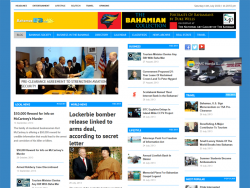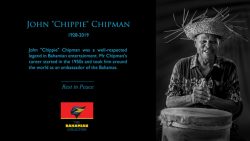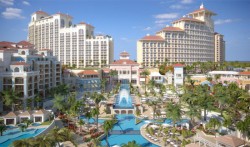This week Grand Bahamians will be celebrating the 50th or golden anniversary of the signing of the Hawksbill Creek Agreement (HCA), that unique piece of legislation that created the wonderful city of Freeport.
This was the direct result of the creative vision of Wallace Groves, an international developer and lumber tycoon. He dreamed that the little sleepy settlements of farmers and fishermen on Grand Bahama, with its pine forest, could develop into a modern industrial city. With its proximity to the United States and nearby access to an international shipping lane, other factors such as an abundant water supply and vast acreage of land, Grand Bahama created a more than ideal atmosphere for such a project to be realized.
In addition, the HCA provided a tax-free incentive that today is known as “Free Trade,” probably the largest in the Americas at that time. This was long before NAFTA (North America Free Trade Agreement) and decades before CSME (Caribbean Single Market Economy). With the blessing of the Bahamian government of the day and an enthusiastic Minister of Finance/Tour-ism, the Honourable Stafford Sands, Freeport was poised to become the Hong Kong of the Caribbean.
By some incredible historical coincidence, at about the same time, the dream of another visionary was being realized in Central Florida. Amidst the mosquito infested swamps and farmland, Developer Walt Disney had the vision of creating a unique city of the future, one that combined fantasy and science. Like Wallace Groves in Grand Bahama, Walt Disney needed some special concessions from the government, including being granted a lease on tens of thousands of acres of land.
The most critical concession was the fact that the developer had to control the development as with such new materials and techniques being utilized, to wait for government boards and regulators could be disastrous to the project. Fortunately, this very important concession was granted.
When the Disneyworld project was debated in the Senate of the United States, it was passed almost unanimously by a vote of 98-2. Ironically, the only two Senators who voted against the Disney project were the two Senators from Florida. Their concern was that should the Disney project prove successful, this might interfere with the tourism industry of Miami Beach.
Fifty years later, even his harshest critics or doubters would honestly admit that the Disney project was a fairytale success, even further than the wildest imagination of Walt Disney. Grossing some $60 billion annually, Disney’s income rivals that of many countries. But, even more outstanding is the fact that the area around Disney has produced a metropolis of several million people.
Orlando is now one of the fastest growing cities in the world, with more flights from some European cities than Miami. With its mega resorts, convention centres and the largest time-share industry in the world, Orlando now rivals Las Vegas as one of the great tourist meccas of the world.
The only setback for Disney was the legend of its own success. Since Disneyworld had established itself, almost another dozen theme parks with similar investment potential have invaded the area, providing the Orlando area with almost zero unemployment and a tax contribution to the governments that makes Uncle Sam smile.
The development of Freeport, on the other hand, is another story that as Bahamians we know all too well. In the beginning, Freeport was off to a brisk start. It attracted locals and internationals alike. Many people were able to find two jobs if they so desired and there were all indications that by the year 2000, Freeport could become the largest city in The Bahamas with a population of several hundred thousand inhabitants. There was magic in the air and Freeport was referred to as “The Magic City!”.
However, unlike the Disney project that took off like a Cape Canaveral rocket launch, the Freeport boom was short-lived. In 1967, there was a change in government as the PLP replaced the UBP and consequently came a different national agenda. Political analysts believed that the boom bubble began to burst in 1969 when at the opening of the Bahamas Oil Refinery, Prime Minister Lynden Pindling ラ in a heavy handed way ラ delivered what has become known as the “bend or break” speech.
Considering the fact that Prime Minister Pindling was speaking to an audience of potential investors and CEOs, in hindsight, many persons questioned the timing of his remarks. For Freeport, it was the beginning of the end, as the Freeport economy went into a tailspin that to this day it has never fully recovered from.
To make matters worse, the reputation of Freeport as a place to do business was not a positive one. Corruption, scandals, political victimization, anti-Bahamian, anti-foreign, greed, “dog in the manger attitude,” unrealistic immigration policy, racially motivated, lazy workers, gangsters, drug dealers, etc. were all words used to describe the atmosphere in Freeport.
Unemployment soared and the Freeport magic was gone. By 1992 when the government finally changed, words such as desperate and declining were used to describe Freeport. Without any true directives or focus, Freeport just drifted. Any development was in an ad hoc manner as business persons just grasped at opportunity that surfaced. Once a playground for the rich and famous, the inventory of hotel rooms dwindled to about a half of what it was in the 1960s as Freeport became famous for hosting the “chicken in the bag” tourist in low budget hotels.
Under the FNM, there was a sincere effort to revitalize Freeport by encouraging new investments. The Con-tainer Port, GB Shipyard, Our Lucaya, etc are examples of their efforts.
Regaining the confidence of investors in Freeport and repairing the damaged reputation was almost an impossible task. Today, in a post-hurricane damaged Freeport, things just only seem to get worse. In a recent address to the Rotary Club, Agatha Marcelle, a junior Minister in the Ministry of Tourism, advised Freeporters and Grand Bahamians and anyone on Grand Bahama seeking employment to get out of town and go to Exuma, Harbour Island, Eleuthera, etc. Such a statement only confirms the lack of faith in the future of Freeport and was another nail in the coffin of Freeport’s development.
Regrettably, earlier this year, the President of the Grand Bahama Port Authority, Edward St George, passed away. For almost the past three decades, Edward St George had been the force behind the development of Freeport. Concerns have been voiced that some of the dreams for Freeport may have died with him. He was the one with the drive, international connections and financial resources that could help build Freeport.
With the new Board of Directors in place, the GBPA must define its objectives and remain focused, if within the last 49 years before the expiration of the HCA, Freeport will be taken to the next level in its development. Or, will it continue to drift aimlessly? More must be done to educate the public, both local and internationally, on the HCA if they are to take advantage of the provisions. Why keep such a significant document a secret? With the CSME and other Free Trade agreements, Freeport no longer has an advantage being a free trade zone. We can only hope that in the remaining 49 years of its existence, Freeport tries to catch up with the dreams of Wallace Groves. We may never know, for when the HCA finishes in 2054, most of us reading this article would have passed away.
Dr. Leatendore Percentie D.D.S



